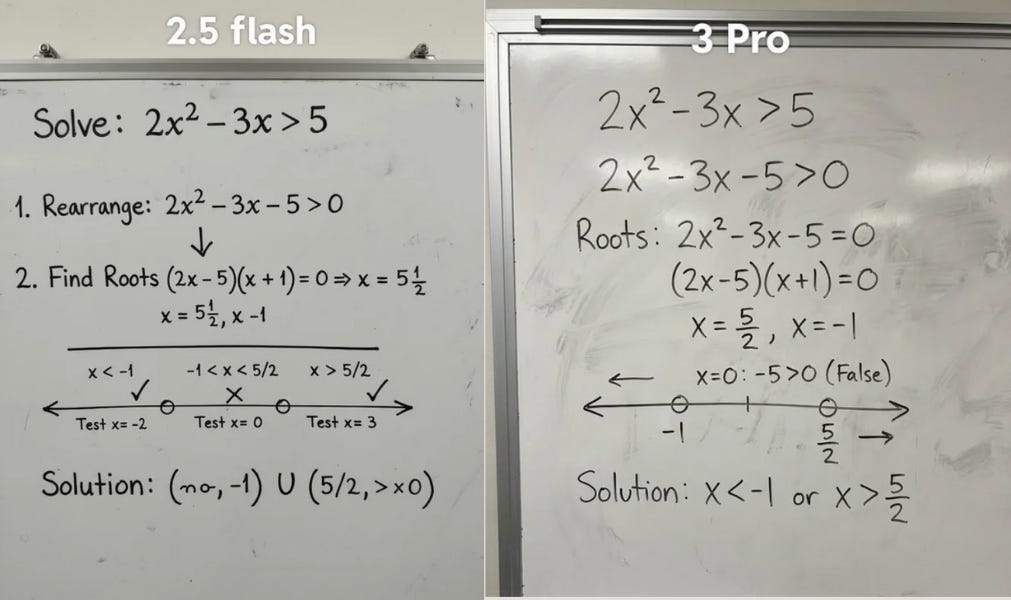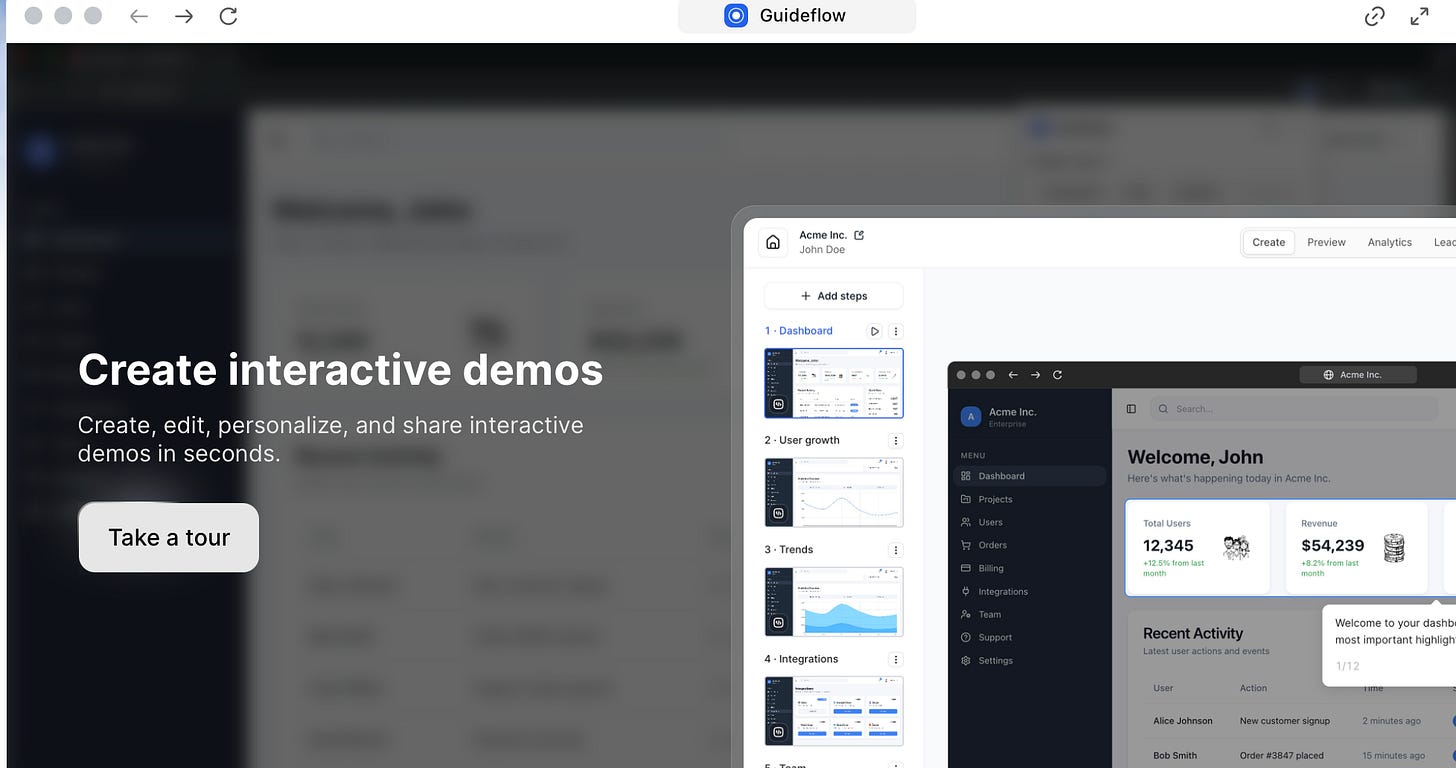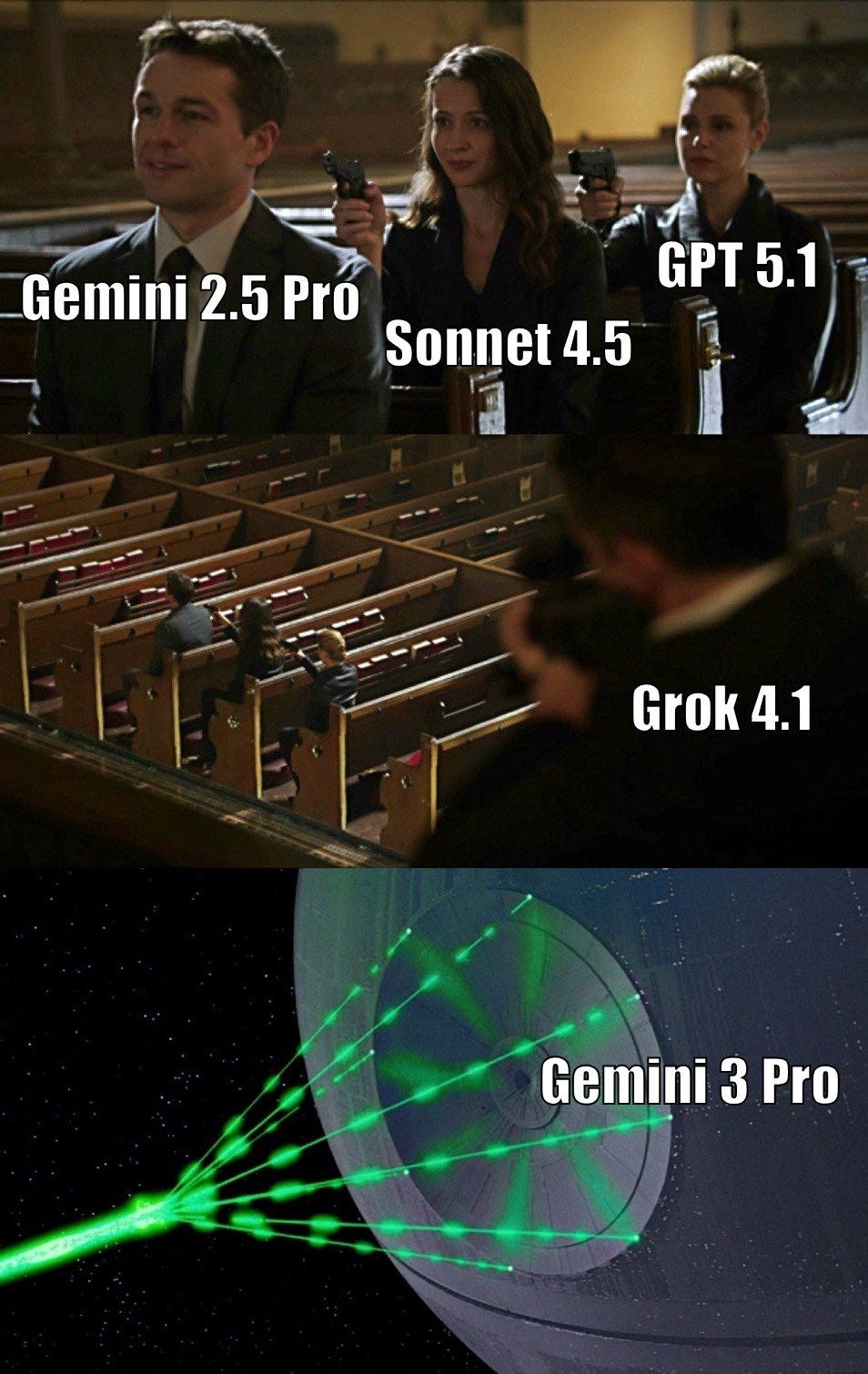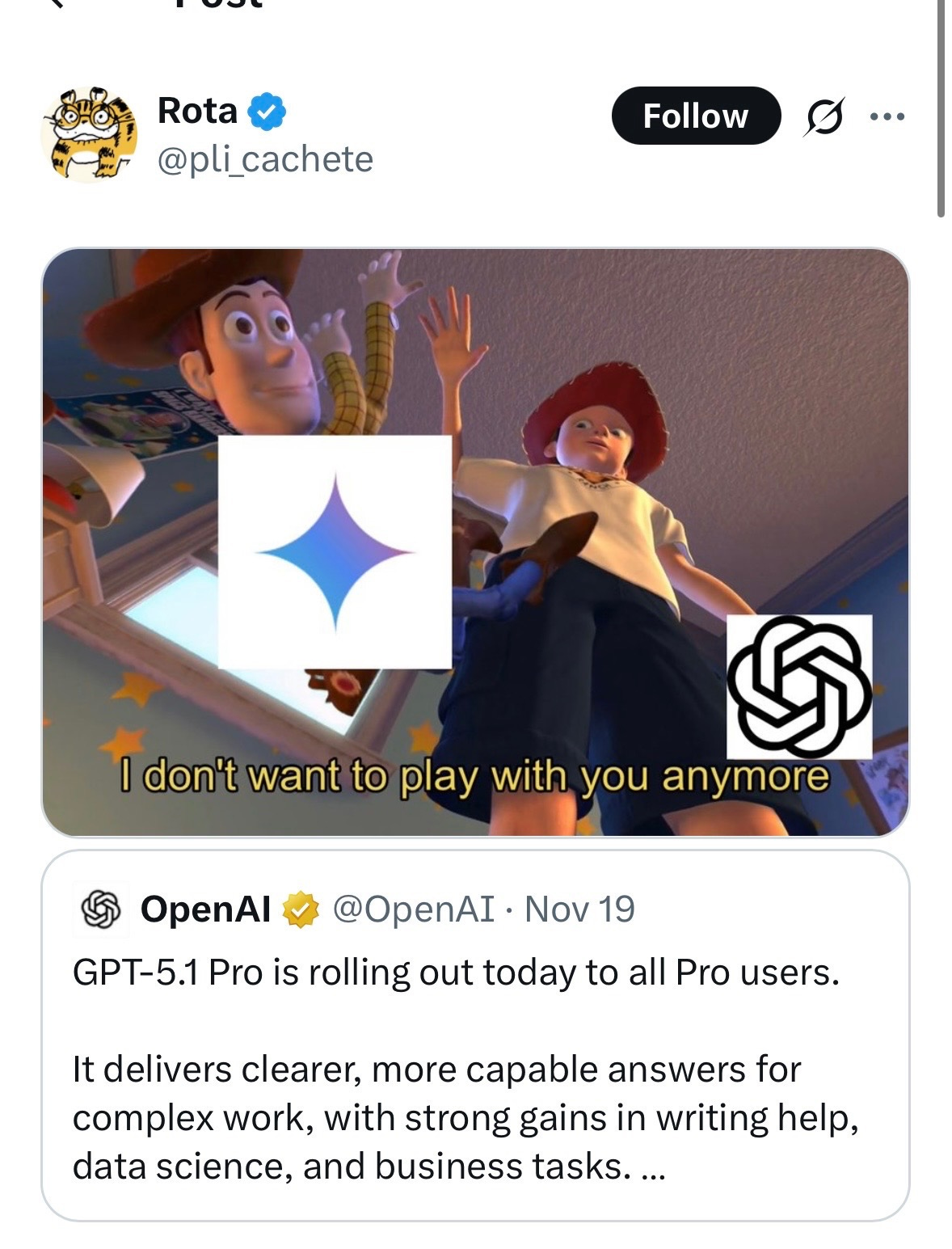Gemini 3, the New Nano Banana & ChatGPT Pro | Weekly Digest
PLUS HOT AI Tools & Tutorials
Hi! Welcome to the latest Creators’ AI Edition.
This week is absolutely packed with releases, all about models. Google dropped the Gemini 3 family with supercharged reasoning and coding tools, OpenAI rolled out GPT-5.1 Pro (hm, just after Gemini 3 Pro), xAI launched Grok 4.1 with sharper brains and emotional smarts.
But let’s get everything in order.
Featured Materials 🎟️
News of the week 🌍
Useful tools ⚒️
Weekly Guides 📕
AI Meme of the Week 🤡
AI Tweet of the Week 🐦
(Bonus) Materials 🎁
This year, we have a limited pre-BFCM Offer for our readers to get 20% OFF Annual Subscriptions. Limited Offer ⏳🔥
Featured Materials 🎟️
Gemini 3 Family release
The drop includes two models. Gemini 3 Pro, which Google calls its smartest model with a 1-million token context window. And Gemini 3 Deep Think, tuned for tough work in math, code, and scientific analysis, but not out yet.
Both models already hit top scores across benchmarks. Moreover, Gemini 3 Pro went straight to number one on LMArena. It is the first model to score over 1500 points in blind user tests.
Google also released Antigravity, a free IDE for vibe coding built on Gemini 3 Pro, plus Gemini Agent. You will find more details in the article below, including practical examples (folks are doing real eye-catching things) and prompts you can use to make complicated tasks much easier.
Nano Banana on Pro Gemini 3 Pro
Of course, Google didn’t wait. Right after the Gemini 3 drop, they pushed out Nano Banana Pro, an image tool built on the Gemini 3 Pro. Now it handles infographics, slide decks, and tidies text placement, keeping characters consistent across multiple images. It supports 4K and both wide and vertical formats and runs multi-step edits, checks its output, and applies fixes. The team even fed it code snippets and resumes to turn into visuals.
This version also fixes the blur and renders native 2K with clean upscaling to 4K. You can try it out directly in the Gemini app (just open “Create images” and switch to Thinking mode). It’s available in Google Slides, Vids, and NotebookLM for Workspace users. Can’t wait to check it out!
News of the week 🌍
GPT-5.1 (Pro)
Well, well, well… someone is clearly trying to steal the spotlight. OpenAI didn’t even give Google a week to enjoy the Gemini 3 buzz. Sam publicly congratulated Google on the release… and OpenAI has started rolling out GPT-5.1 Pro in ChatGPT for the Pro tier users.
The model is built on the GPT-5 Pro architecture. It is slow and deliberate. Early testers say the model is good at doing high-context work, but far from ideal for everyday chatting, as a single response can take 8-10 minutes unless you give it extremely clear prompts. According to OpenAI, GPT-5.1 Pro delivers stronger results in writing, data science, and business tasks.
Sure, OpenAI wants to keep up with Gemini, especially after Google’s upgrades in deep multimodal understanding, but personally, it’s a bit too much. I mean, ChatGPT is super well-known and has a huge influence, so it can hold back in some moments.
At the same time, OpenAI launched GPT‑5.1 Codex Max, a model built specifically for long coding tasks.
Grok 4.1 is here
xAI just dropped Grok 4.1. According to devs, it’s smarter, more emotionally aware, and actually useful in real conversations. The model picks up on subtle user intentions, keeps a consistent personality, and stays accurate and reliable.
xAI got here by gradually scaling up their reinforcement learning from Grok 4 and fine-tuning style, personality, and alignment. They’re using advanced reasoning agents to automatically evaluate and improve answers at scale.
Also, the rate of hallucinations fell from around 12.1% to 4.2% (I really hope so, because lately it was making up a lot of stuff).
ChatGPT Atlas is refreshed
OpenAI updated ChatGPT Atlas! They added vertical tabs (kind of Arc-style) in a resizable left sidebar. So to rearrange tabs, just drag them. To enable vertical tabs, right-click the address bar and pick “Vertical Tabs”. Anyway, the address bar still stays at the top, but this is a step toward a cleaner layout.
In addition, you can now set Google as your default search engine, letting Atlas mix traditional search with AI-generated summaries. Other changes include importing extensions, iCloud keychain passkeys, and an improved downloads interface. These updates aim to make Atlas more user-friendly.
New standard for 3D object
Meta presented SAM 3 and SAM 3D, and these models push computer vision forward. SAM 3 segments and tracks objects in images and video through text prompts like “yellow school bus” or “red baseball cap”. It works with complex queries and even with multimodal LLMs for long descriptions. SAM 3D turns photos into full 3D objects or full-body meshes, and the quality beats other models in human preference tests.
Both models are free to test in the new Segment Anything Playground, and Meta has open-sourced the weights and code, so developers can plug them into their own workflows.
Meta is already rolling this into its products. Marketplace gets a “View in Room” feature, and apps like Edits and Vibes will use these models for faster and cleaner image and video edits.
Another big deal
Microsoft, Nvidia, and Anthropic locked in a massive partnership. Anthropic agreed to buy 30 billion dollars’ worth of Azure compute (the company will use Microsoft’s cloud servers and capacity), while Nvidia is putting in up to 10 billion dollars and giving Anthropic access to its top GPUs. Microsoft is adding 5 billion dollars and will ship Claude models across Microsoft 365, GitHub Copilot, and Foundry.
Claude is now the only major model available on all three big cloud platforms. The companies want faster model development, better GPU efficiency, and tighter integration with enterprise tools. Nadella said Microsoft will keep working with OpenAI, so the alliances run in parallel.
Frankly speaking, this close collaboration within a small circle of partners doesn’t look economically stable, but we will see.
Useful tools ⚒️
Paraflow - AI canvas-based product design agent
Typeless - AI voice dictation that’s actually intelligent
Markopolo AI - Reach 30–40% more customers with personal outreach at scale
BeFreed - Learn anything with your own personal audio agent
Guideflow - The AI demo automation platform for SaaS
Guideflow basically lets people try your product instantly, more or less like a “test-drive” experience. It turns a screen into a clickable walkthrough, and customers can click and explore it without calls and scheduling. The tool automatically creates demos and live-like environments for different roles and use cases. Everything is personalized and super simple.
Weekly Guides 📕
ChatGPT 5.1 Codex Just dropped and it’s a MAJOR Upgrade (full guide)
How to Use the AI Canvas in Miro: Complete Guide
LangChain v1: Build an Auto Meeting Recap Assistant
Build ANYTHING with Gemini 3 Pro and n8n AI Agents
AI Meme of the Week 🤡
AI Tweet of the Week 🐦
Bonus Materials 🎁
Stanford CS229 I Machine Learning I Building Large Language Models (LLMs) - To watch and learn real challenges in building large language models
Deezer/Ipsos survey: 97% of people can’t tell the difference between fully AI-generated and human made music – clear desire for transparency and fairness for artists - To read and realize the scope of the issue
Disrupting the first reported AI-orchestrated cyber espionage campaign - To read how Chinese hackers used Claude for large-scale espionage
Using Al to turn Conversations into Revenue: A leader’s guide - To listen









